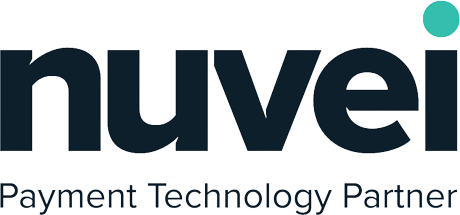SD-WAN & SASE
The Future of Enterprise Networking is Now

Go Beyond Legacy Solutions
We at GlobalDots hunt for the most cutting edge and relevant technologies out there.
Once tested and found qualified we bring you the most certified innovative products out there for every pressing use case.

Your Benefits
Deliver optimized networking and strong security to all locations, applications, and users regardless of where they are. Simplify and accelerate resource provisioning.

Manage all networking & security features and policies in a single interface, using a common terminology, and gain deep visibility into network and security events.

 Zero Maintenance Effort
Zero Maintenance Effort
Lose the grunt work to maintain on premises infrastructure. Physical topology, redundancy, scaling, sizing, and upgrading is dramatically reduced.

Reduce infrastructure TCO by simplifying and consolidating your network and security stack, parting with hardware maintenance and software updates.

SASE: The Future of Enterprise Networking is Now
Most networking and security solutions today are still painfully incompatible with a cloud-centric business ecosystem. Secure Access Service Edge (SASE) fuses enterprise network and its security layer into a single, cloud-based platform. Think of it as network-plus-security-as-a-service. SASE well-demonstrates the holistic, innovation-driven approach applied into GlobalDots’ every project. We therefore explored this trend and its implications on the future of IT & security architecture.

FAQs
-
Can I switch between vendors if I’m not satisfied with one of them?
Yes, one of the main advantages of working with GlobalDots is that we have relationships with multiple vendors per solution category, so our customers can switch between vendors if they would like to. Moreover, we will proactively offer better vendors if we see the value for the customers in terms of features, capabilities or price.
-
How does GlobalDots keep up with the latest technologies in the market?
The people working at GlobalDots live and breath technology. We have relationships with all the cool startups and always seeking new vendors with innovative tech to offer to our customer base. We research and explore emerging technologies on a weekly and daily basis, we filter out the noise and focus only on the promising solutions we vetted that will bring the most value to our customers.
-
What does support look like when working with GlobalDots?
Our solutions architects, engineers and DevOps experts have hands-on experience with the solutions we resell and integrate. Our engineers work with you to resolve any issue to your satisfaction, and never leave you hanging. If needed, we’ll be the ones to engage directly with the vendor, so you don’t have to.
-
What is SD-WAN?
The term SD-WAN (Software-Defined Wide Area Network) indicates the approach to managing and optimizing a wide area network (WAN) by centralizing control, optimizing traffic flows, and integrating security. Traditional WANs typically rely on fixed circuits like MPLS (Multiprotocol Label Switching) to connect branch offices to a central data center. However, as organizations increasingly adopt cloud services and remote work, the traditional WAN model struggles to keep up with the demands for bandwidth, performance, and security. So by:
- Centralizing control: SD-WAN separates the networking hardware from its control mechanism. This allows for centralized management of the entire WAN, making it easier to deploy, manage, and optimize network resources.
- Optimizing traffic flows: SD-WAN is able to route traffic dynamically across the best available path (e.g., MPLS, broadband, 4G/5G), improving performance and redundancy. This is crucial for ensuring optimal performance for cloud-based applications, which are sensitive to latency and jitter.
- Integrating Security: SD-WAN often includes some security features, such as encryption, basic firewalling, and possibly VPN capabilities.
-
What is the use case of SD-WAN?
SD-WAN is ideal for organizations looking to optimize their WAN connectivity, especially those with multiple branch offices, remote sites, or that rely heavily on cloud applications. It’s particularly useful for improving the performance of real-time applications like VoIP and video conferencing/meeting. SD-WAN is often adopted to reduce the costs associated with traditional MPLS circuits by utilizing less expensive broadband and 4G/5G connections
-
What is SASE?
SASE (Secure Access Service Edge) is a forward-looking architectural framework that aligns with the needs of today’s distributed, cloud-centric environments. By integrating SD-WAN, comprehensive security services, and Zero-Trust approach SASE provides a unified, flexible, and secure network architecture that can adapt to the evolving requirements of modern enterprises. SASE is designed to address the complexities of managing and securing a distributed network infrastructure, especially in the context of increased cloud adoption, remote work, and mobile access.
-
What are the key components of SASE?
- Software-Defined WAN (SD-WAN): SASE leverages SD-WAN technology to manage and optimize the connectivity between users, data centers, branch offices, and cloud services. SD-WAN provides the flexibility to use various transport mechanisms (e.g., MPLS, broadband, 4G/5G) and intelligently route traffic based on real-time conditions.
- Cloud-Delivered Security: SASE integrates security services directly into the cloud, rather than relying on traditional data center-based security models. This could include a variety of security functions:
- Secure Web Gateway (SWG): Protects users from web-based threats by filtering unsafe content and enforcing acceptable use policies.
- Intrusion Prevention System (IPS): Monitors network traffic in real-time, analyzing packets for signs of malicious activity. It uses signature-based detection (matching patterns from a database of known threats) and anomaly-based detection (identifying unusual behavior that deviates from normal patterns) to identify potential threats.
- Next-Generation Anti-Malware (NGAM): Detects, prevents, and responds to a wide range of sophisticated malware threats. Unlike traditional anti-malware solutions, which rely primarily on signature-based detection, it incorporates multiple advanced techniques to identify and mitigate both known and unknown (zero-day) threats.
- Firewall as a Service (FWaaS): Delivers firewall capabilities as a cloud-based service, enabling consistent security policies across all network locations
- Cloud Access Security Broker (CASB): Provides visibility and control over the use of cloud services, ensuring that data is protected as it moves between on-premises systems and cloud environments.
- Data Loss Prevention (DLP): Protects sensitive information from being accessed, transmitted, or stolen inappropriately.
- Zero Trust approach: Access is granted based on the identity of the user or device, rather than relying solely on network location. This means that every access request is authenticated, authorized, and continuously monitored, regardless of where the user or resource is located.
- Global Edge Network: SASE solutions are typically delivered via a globally distributed network of points of presence (PoPs). This ensures that security and networking services are delivered as close as possible to the user, reducing latency and improving performance.
-
What is the difference between SD-WAN and SASE?
SD-WAN is primarily focused on optimizing and managing wide area network (WAN) connectivity. SASE instead goes further by integrating comprehensive security services into the network itself. SD-WAN can be a component of a SASE architecture, but SASE represents a more holistic approach that converges networking and security into a single, cloud-native framework.
From an architectural perspective:
- SD-WAN separates the control plane from the data plane, allowing centralized management of the network across multiple connection types. It creates a virtual overlay on top of the existing physical network, optimizing traffic routing between branch offices, data centers, and cloud services. SD-WAN is deployed at the network edge, typically at branch offices or remote locations, to manage and optimize traffic between these locations and central data centers or cloud services.
- SASE is typically delivered as a cloud-based service, with security and networking functions distributed across a global network of points of presence (PoPs). This cloud-native approach allows SASE to deliver consistent security and network performance regardless of where users or resources are located.SASE converges both networking and security into a single, cloud-delivered service, simplifying the architecture and management of the network.
-
What is the use case of SASE?
SASE is best suited for organizations that need to provide secure access to applications and data for a distributed workforce, especially in environments with heavy cloud usage. It’s designed to address the security challenges of remote work, bring-your-own-device (BYOD) policies, and direct internet access from branch locations. Furthermore, SASE is ideal for organizations looking to consolidate their networking and security infrastructure into a single solution simplifying management, enhancing monitoring, control and audit.















